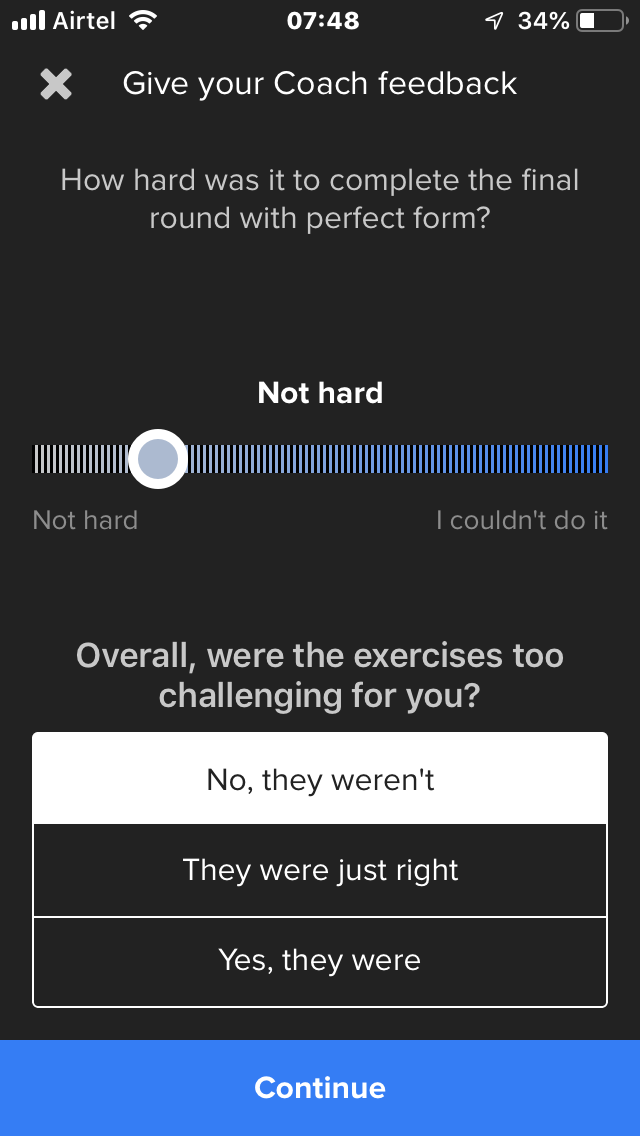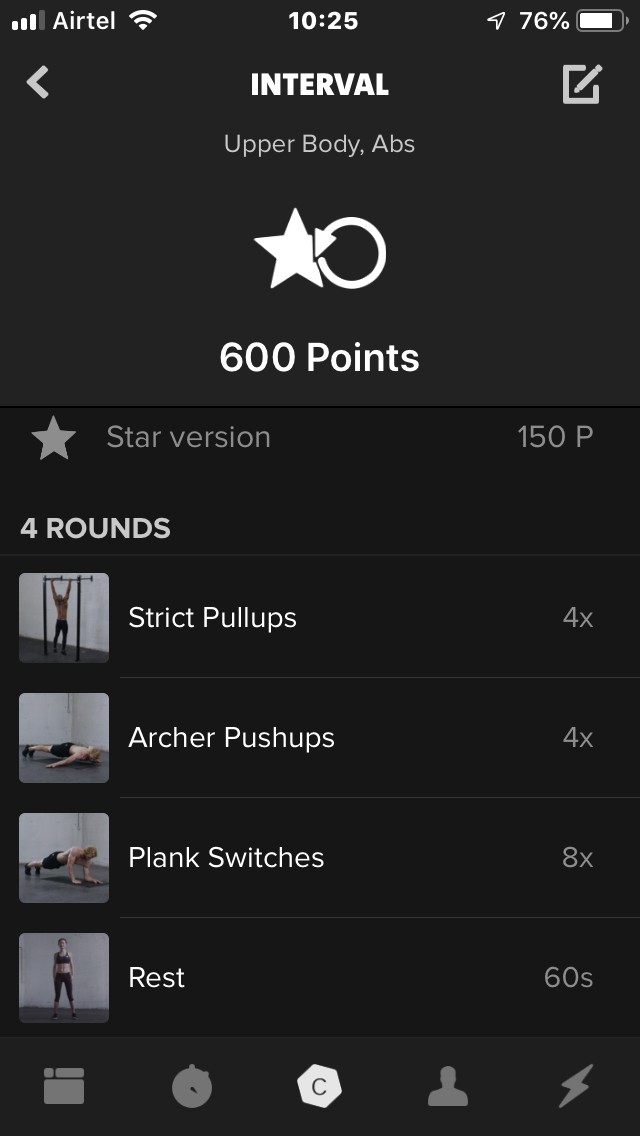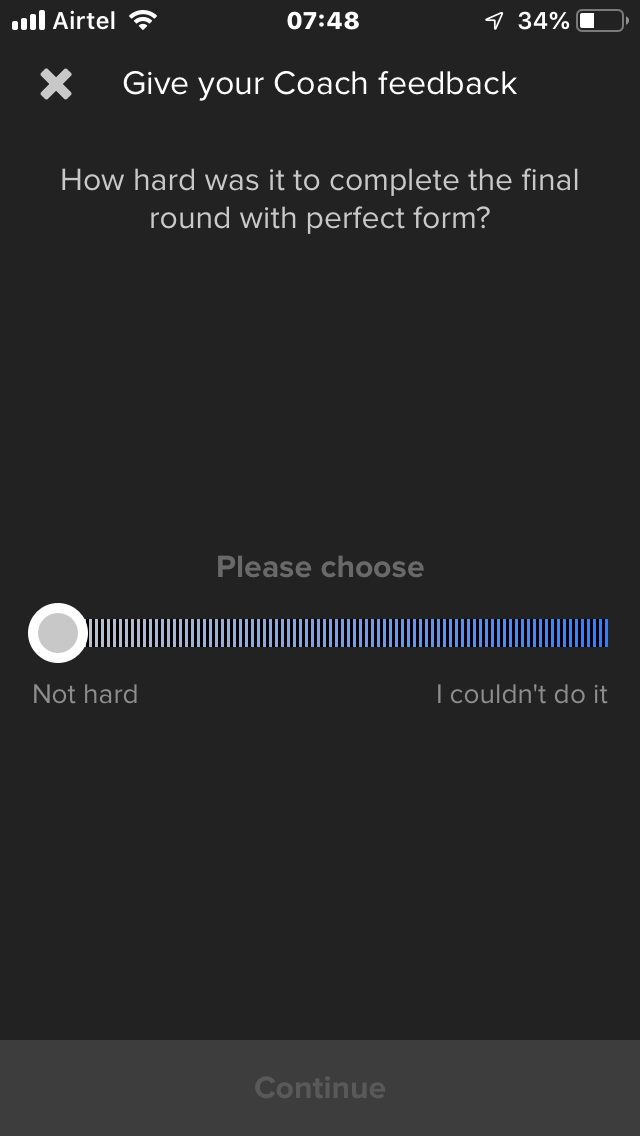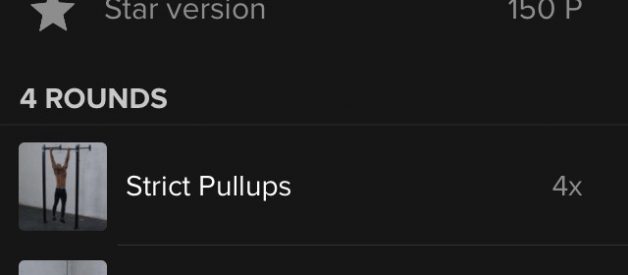How I finally managed to gain some muscle!
For the first time in my life, I recently finished an entire 12 week Freeletics plan. In the past, every time I started on a plan, I would injure myself badly in the third or fourth week and have to give up training for a while. And then I?d never finish for fear of injuring myself again. Mind you, I had been experimenting with various workout programs and gyms for a while, most of which I gave up on within a few weeks.
What is Freeletics?
Freeletics is an app that customizes workouts for you based on your level of fitness and conditioning when you start the plan. I chose an entirely bodyweight plan, though you can choose a plan involving weights as well.
I don?t have access to a gym (I choose not to!) and hence the bodyweight plan was most suitable for me. I do have a pull up bar in my room, and that was the only equipment I needed to follow the bodyweight plan. All the Freeletics plans have varying degrees of cardio and strength workouts baked into them. I chose a plan which had more strength and less cardio, since my main aim was to gain some muscle.
I have always been relatively sporty and thus my general level of fitness was above average when I started the plan. Not that I?ve gone out and done the research on this. Before starting the 12 week plan, I was able to do the following without straining myself:
- 30 consecutive push ups
- 12 consecutive pull ups
- 1.5 km swim
- 50 burpees
The app has excellent videos and animations showing you exactly how you should perform each exercise. This is great since you know the form you should look to achieve with each repitition.
Week 1
Week 1 was like a preparatory week, almost something like a ?first date?, where the app (also called the coach) gets to know you better ? it gathers information about the exercises you are able to perform, how many reps you can do, the degree of struggle involved to complete each set and your general fitness level. The idea is that the workouts you get in week 2 are based on your performance during week 1, and this is how the app builds you up according to your performance in each workout. It goes without saying that at least in the Freeletics world, honesty pays.
If you are honest with your feedback, you are most likely to get workouts which push you just enough to keep making steady progress throughout the 12 week plan.
 Where honesty comes in?
Where honesty comes in?
I had been working out for a few months before I started using freeletics. I assumed that week 1 would be relatively easy, as I was already being able to do quite a few push ups and pull ups. However, week 1 was quite a shock to my body. In particular, the first week had a number of cossack squats and pistol squats, which I really struggled to do. In fact I do not recommend doing these squats unless you have done a lot of preparatory work so your muscles and ligaments know what they are in for! I learnt a painful lesson in Week 1, namely that flexibility in the tendons and ligaments is also a vital part of overall fitness!
At the end of week 1, I was barely able to climb down the stairs since my quadriceps were so sore from the various types of squats I had been subjected to. In fact, after Week 1 I had to take a break of 5 days until my legs felt normal again.
Weeks 2?11
Weeks 2 through to 11 were structured as workouts of varying intensity and length. The first workout of each week was relatively quite challenging (and long ? 45 minutes), and the second and third workouts were usually the same intensity, but of shorter duration (30 minutes).
All workouts consist of a series of drills and intervals.
In drills, you perform a number of repititions of a single workout. The idea here is to master the form and technique required for performing a particular exercise. Each workout has 1 or 2 drills at the start. This is a great way to get used to doing exercises you are not already familiar with. For me, I had to be very mindful while performing cossack squats and archer push ups, as I had not done these before.
In intervals, each round usually has between 3 and 5 exercises performed one after another. Each round is followed by a 60 second break. Most intervals consist of 4 rounds. Depending on the exercises given to you by the coach, intervals can become really demanding on the body.
A typical interval might be structured as 4 rounds of the following:
- 6 pull ups
- 8 diamond push ups
- 10 toes to bar
- 20 squats
 A typical interval set
A typical interval set
On most days, the coach also gives you a tough exercise which it wants you to repeat a certain number of times, taking as few breaks as possible and to be completed in the shortest time you can manage. The number will vary depending on what your coach thinks will be challenging for you. Given these are the last exercise performed on a day, I used to really struggle to do these. I would invariably be assigned 25 pull ups as the last exercise. Given I had already done 40?50 repititons of a number of exercises earlier in the workout, my shoulders and trapezoids would rebel while performing the last round of pull ups. Getting through 70?80 pull ups in a 30 minute exercise session really does test your mental toughness.
Week 12
Week 12 is known as ?Hell Week?. This is the last week of the plan. You are required to do a workout per day, completing 7 workouts in 7 days.
To be honest, though I did feel accomplished on finishing the last week, it did not feel hellish to me at all. I could have done more during the workouts. On reading some other blogs, I assumed hell week would be a nightmare. It wasn?t.
Frequency of workouts
The freeletics coach recommends that to get results, you should do the workouts 3?4 times a week.
Initially, I went overboard and tried to do a workout everyday. So I was finishing 2 weeks? worth of workouts in a 7 day period. This is NOT RECOMMENDED. I just did not have the level of fitness required to carry this through.
After 4 weeks of doing this, my body began to rebel. In particular, I realized that my body was struggling since I began sighing and taking deep breaths very often. I then slowed down the pace and continued doing 3 workouts every 7 days, in effect taking a day off after every workout.
The great thing about freeletics is that the workouts are usually short ? anywhere between 25 and 45 minutes. I remember I used to spend an hour at the gym and not feel as exhausted as I do after a tough freeletics workout. It is easy to trick yourself into thinking that you should work out every day, but given how intense Freeletics is, I do not recommend it. The stress you put on your muscles in a 25 minute burst means that a rest day is very much in order.
Be kind to yourself. The aim is to get stronger over a 12 week period. 3?4 workouts a week will definitely help you get stronger!
What I loved about the Freeletics experience
What attracted me to freeletics in the first place was that I could complete the workouts in my own room. I mean, what else could a man in Bangalore ask for? I?d do anything not to spend time on the road traveling to and from a gym!
As I mentioned before, my previous attempts resulted in injuries. This time however, the story was different. The app starts each workout with a thorough warm up. I am certain this really helped me get warmed up before a really strenuous exercise session. In addition to the warm up suggested by the app, I suggest doing some stretches as well for the big muscle groups in the body. After each workout, there is a cool down session, which any experienced athelete will tell you is equally important.
After each workout, the app asks you how hard you found it, and whether you would have been able to do more. In most instances, my answer was ?exhausting? or ?very exhausting?. Additionally, there were barely 5 workouts in the twelve week period where I felt like I could have done more. The app uses this information to structure the following weeks? workouts, so being honest here is a crucial aspect of the experience.
 How hard was it?!
How hard was it?!
The cool down consists of a number of stretches, each of which last about 15?30 seconds. I genuinely felt like my body enjoyed cooling down after being pushed hard during the workout. Having played a lot of sport in my life, I realise the importance of a cool down, but I really liked the app counting down the seconds, ensuring I completed each stretch for a certain length of time.
The coach, as they call it, is reasonably ?intelligent?. In the sense that it builds you up gradually over the 12 weeks to being able to perform plenty of challenging workouts. This is an aspect of the app that can be improved, but it does a good job of ensuring you push yourself and in the process, make good progress.
What can get better
I would have loved it if the app recommended a few cardio workouts beyond the bodyweight workouts that were part of the plan. I realised that I would need to do some cardio as well to see the best results, so I scheduled in a 30 minute swim twice a week. Other than that, I did not do any cardio or other exercise whatsoever.
The other aspect which I would have liked is to have some more workouts aimed specifically at the lower body. If I were to put a number on it, I spent only 20% of each workout on the lower body. This proportion can be improved, given the number of big muscle groups in the lower limbs.
A note on managing expectations
If you get onto the Freeletics website, or download the app, you see stunningly chiseled bodies performing workouts. They also have videos of people who have achieved some incredible body transformations. The first thought that pops into the mind is ?wow I would love a body like that?.
My view is that it will take significantly more work, and probably weight training as well, to get a body like the one Freeletics claims you can have from following their workouts. Having finished the 12 week plan, I can assure I look nothing like the Freeletics models. There are many reasons for this, and personally, I put it down to a diet which is not optimal, and also to the fact that 12 weeks is not enough to get a body like that. As a result, I have now just started my second 12 week plan.
Final thoughts
I love freeletics because it does bring results. I have gained 4 kgs (mostly muscle) since starting the plan, and I feel much stronger. I can do significantly more pull ups, push ups, squats and other exercises now compared to 3 months ago.
I don?t look like a Greek God (yet), but I would like to believe that I do have a work ethic I am proud of. There is something about the app which makes you want to follow through and complete workouts on schedule. Trust me when I say this. I really look forward to the workouts in the morning. With summer well and truly here in Bangalore, sweating it out before work also ensures I drink plenty of water through the day.
I have a high uric acid level and therefore I do not take any protein supplements. I would like to believe that my progress would be greater if I fed myself the right amount of protein. My diet throughout the plan had been predominantly vegetarian, with some eggs thrown in and a non-vegetarian meal once a week. I have not been able to follow through on a ?good diet? as I spend 10 hours a day away from home, and getting access to the right food becomes difficult as a result.
Me after 1 Freeletics plan 😐
In my next post on Freeletics, I plan to do some measurements and see if there are significant changes in muscle size before and after a program. I also plan to check some vital blood markers and see if there are any changes there. While I don?t have a ?before? and ?after? picture, I can assure you that I am quite a while away from being shredded. Not that I am aiming for that sort of look.
That?s it for this post. I hope it was useful and I can?t wait to begin a more ?quantitative? approach to round 2 of the freeletics plan. Stay tuned!
Thanks for reading! If you want to get in touch with questions about freeletics, or if you are in Bangalore and want to work out together, please do get in touch. I would love to work out with other free athletes!

